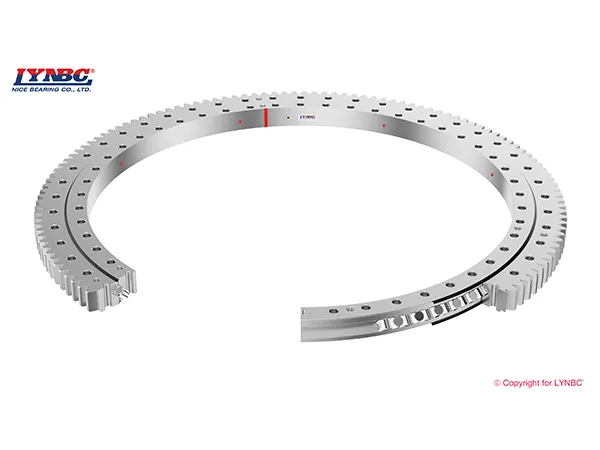Slewing bearings, also known as slewing rings, are crucial components in heavy machinery. They allow for rotational movement while supporting significant axial, radial, and moment loads. Proper installation and maintenance are essential for their longevity and reliable operation. This guide covers the key steps for both.
Installation and Maintenance Guide for Slewing Bearings

Installation
The installation process is critical for the bearing’s performance. Deviations can lead to premature failure.
1. Preparation
Inspection: Before installation, inspect the bearing for any damage, such as dents, rust, or improper sealing.
Surface Preparation: Ensure that the mounting surfaces of both the machine’s structure and the slewing bearing are clean, flat, and free from burrs. The flatness of these surfaces directly impacts the load distribution on the bearing’s raceways. A non-flat surface can cause uneven loading and shorten the bearing’s life.
Bolt Holes: Clean the bolt holes of any debris or old sealant. This ensures that the bolts can be tightened correctly and securely.
2. Mounting
Lifting: Use appropriate lifting equipment to move the bearing. Be careful to distribute the weight evenly to avoid distorting the bearing.
Placement: Gently lower the bearing onto the mounting surface. Make sure the bearing is correctly aligned with the bolt holes.
Securing: Install all bolts, but do not tighten them completely. Start by hand-tightening all bolts, then use a torque wrench to tighten them in a crisscross or star pattern. Follow the manufacturer’s specified torque sequence and values to ensure even pressure. Overtightening or improper tightening can deform the bearing and lead to failure.
…
More detailed information on slewing bearing installation and maintenance guidelines can be found at:https://www.lynicebearings.com/a/blog/installation-and-maintenance-guide-for-slewing-bearings.html


